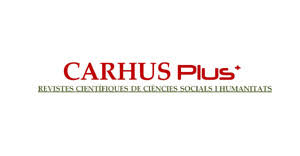Call for Papers: Monteagudo 31 (2026): "Humanimal alliances in the Anthropocene era: conspiracies, games and resistances".

Humanimal alliances in the Anthropocene era: conspiracies, games and resistances
The Anthropocene, originally defined as a new geological era marked by planetary changes originating in human agency, has entered the humanities over time, bringing together a set of crucial debates today. One of them refers to the relationship that the human animal establishes with the rest of animals and living beings, especially after the awareness of the series of mass extinctions caused by the aggression of the modern economic system on all habitats. In this context, a growing number of literary works in Spanish are showing varied ways of representing the crisis of the Anthropocene/Capitalocene, also thematizing innovative forms of resistance. One of them, motivated by the so-called animal turn (Abram, 1997; Weil, 2012; Wolfe, 2003), has reflected on the need to explore multispecies alliances between humans and non-humans when it comes to articulating more compatible imaginaries with a common future. As Donna Haraway (2007; 2016) has pointed out, the current crisis demands a review of power relations between humans and other beings, rethinking the balance of forces in a less anthropocentric way, resizing human exceptionality and exploring post-anthropocentric identity possibilities and multispecies resistance.
In the Hispanic world, especially in Latin America, we have a strong critical tradition in this regard that rethinks the notions of the human and the non-human based on the postulates of biopolitics (Giorgi, 2014; Yelin, 2020). These contributions, which have not lost their relevance in our days, have opened new paths to understand the representations of human/animal relations in the work of such important authors as Clarice Lispector, Manuel Puig, Marosa di Giorgio, Mario Bellatin or Hebe Uhart, among many other exponents of Spanish literature from the 1960s to the first decades of the 21st century.
Our purpose, then, is to pick up that torch and discover in the most recent Spanish literature those presences and other-relations between humans and non-humans, which today can take on a new meaning in this context of anthropogenic and planetary crisis. We are thinking, especially, of literary works of any genre (poetic, narrative, essayistic, hybrid, testimonial, dramatic, etc.) that present a blurring or rupture of the typical power relations to propose other possibilities of connection: ties of survival, friendship, revenge, conspiracy, support, empathy, rebellion, etc. In 21st century Spanish literature, moreover, the zoological spectrum is varied and broad, so that we no longer only attend literary representations of the most familiar animals (dogs, horses, cats, chickens, etc.), but representations of insects, reptiles, aquatic or cave animals have been reinforced: the possibilities are almost infinite. Thus, in this issue of the Monteagudo magazine we call for articles that explore and analyze these new “humanimal” alliances (Segarra, 2022) in the most recent Spanish literature, reading in it what meaning they have, what uses, and what rhizome these presences have. Mapping representations of the animal spectrum in 21st century literature: presences, roles, aesthetic and political uses of animality, associated theoretical implications, etc.
Deadline:
October 3rd, 2025.
Publication:
March 1st 2026.
Coordinators:
Sergio Rosas Romero (Universidad de Salamanca), Marta F Extremera (Universidad de Granada) and Jesús Montoya (Universidad de Murcia).






